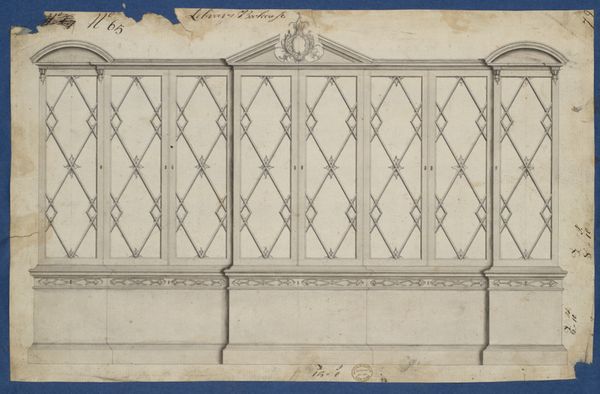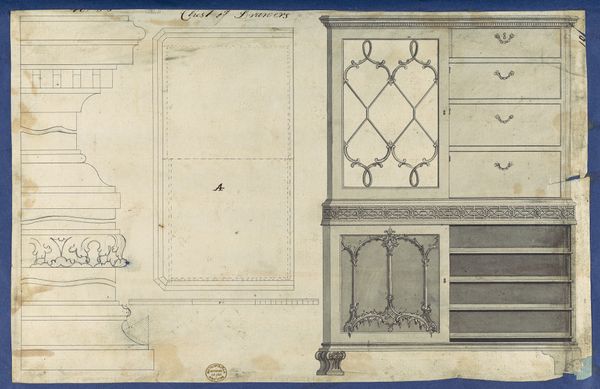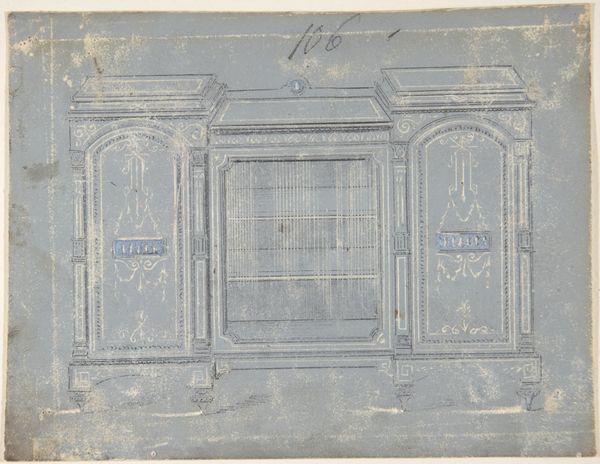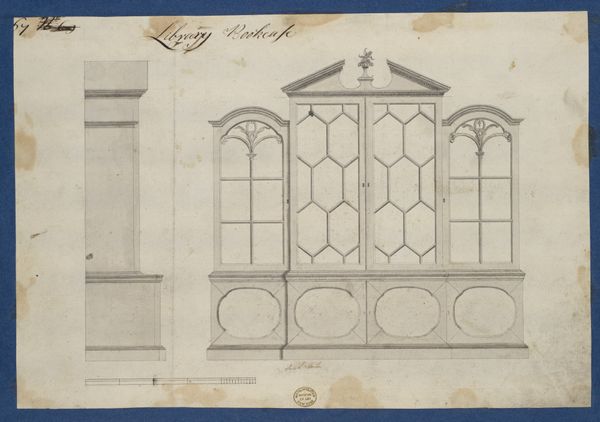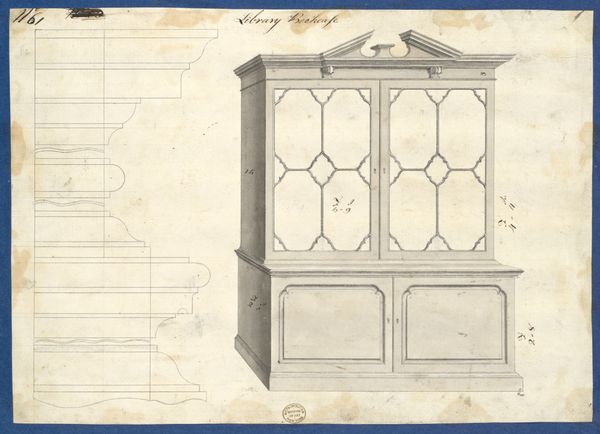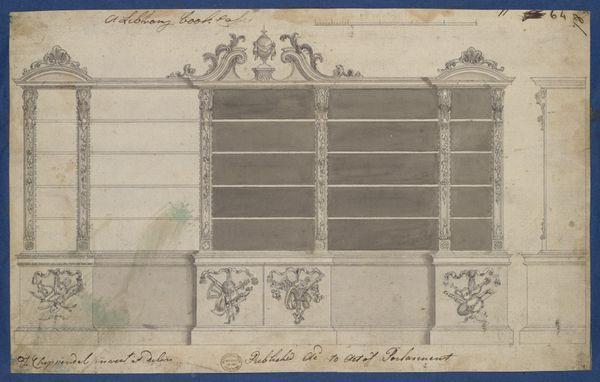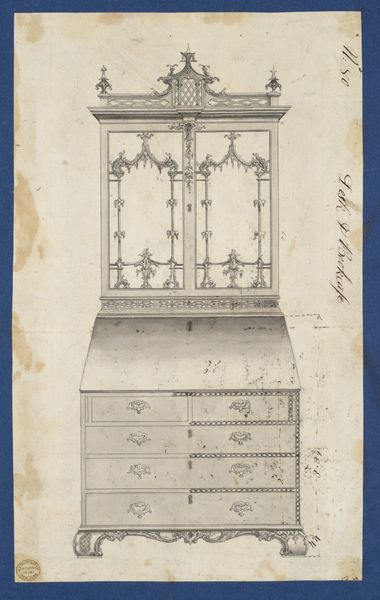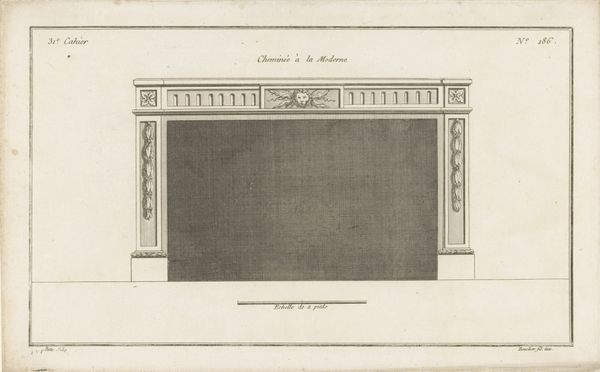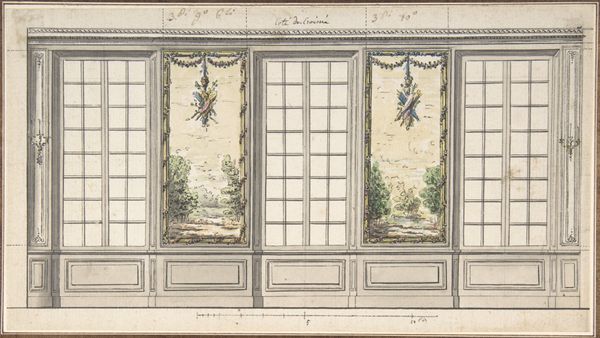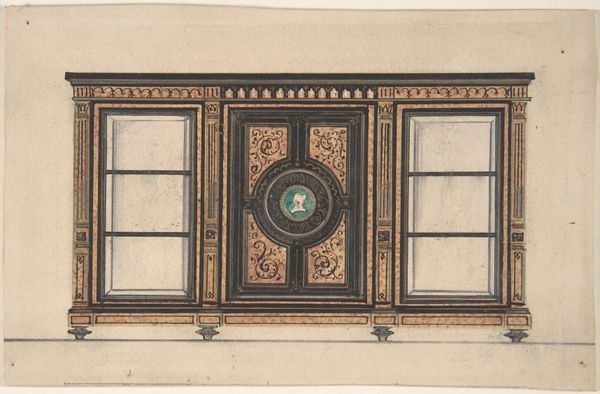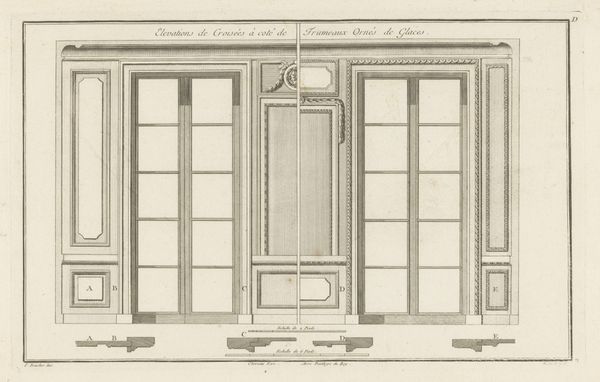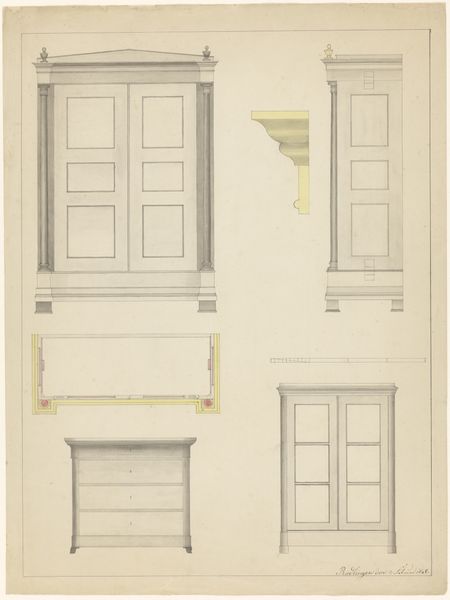
Library Bookcase, from Chippendale Drawings, Vol. II 1753
0:00
0:00
drawing, print, wood
#
drawing
#
neoclacissism
# print
#
geometric
#
line
#
wood
Dimensions: sheet: 9 x 12 13/16 in. (22.9 x 32.5 cm)
Copyright: Public Domain
Curator: Standing before us is “Library Bookcase, from Chippendale Drawings, Vol. II,” created in 1753 by Thomas Chippendale, now residing at the Metropolitan Museum of Art. Editor: My immediate response is that the precise line work evokes order and symmetry, reflecting the clarity and ambition of Neoclassical design. Curator: Precisely! Chippendale operated during a time when design became increasingly associated with class and status, and his furniture catered to wealthy patrons eager to express their sophisticated taste and embrace Neoclassicism’s association with power. Editor: Look at how he meticulously renders the geometric glazing bars. They compartmentalize the space with incredible precision, dividing the display surface to amplify the value of its contents. It is all about idealized proportion and the golden ratio in real life. Curator: And not just the forms themselves. We need to look at how this design served its social function, where these objects were going. Aristocrats used such shelves as showcases of personal libraries and collected curiosities. As such, these rooms became sites for both education and public display. Editor: Beyond functionality, the elevation of such spaces into statements of power is noteworthy. We can follow the meticulous detail with the use of geometric elements in the drawing itself, but consider these forms translated to woodwork! Curator: Yes, consider Chippendale’s clients; they often sat on boards overseeing colonial endeavors abroad, directly connecting their personal acquisitions with far-reaching extractive capitalist networks. They wanted their wealth and social influence affirmed at every glance. Editor: This truly reminds us how design intertwines geometric form and line with an era's aspirations and a particular worldview. It is like capturing history itself, then constructing that into everyday living spaces. Curator: Absolutely. When observing this design, it is also about the world of knowledge it intended to convey and who it served in its own time and context. It allows us to understand the complex dynamics in aesthetic movements, colonial ambition, and knowledge systems of this time.
Comments
No comments
Be the first to comment and join the conversation on the ultimate creative platform.
